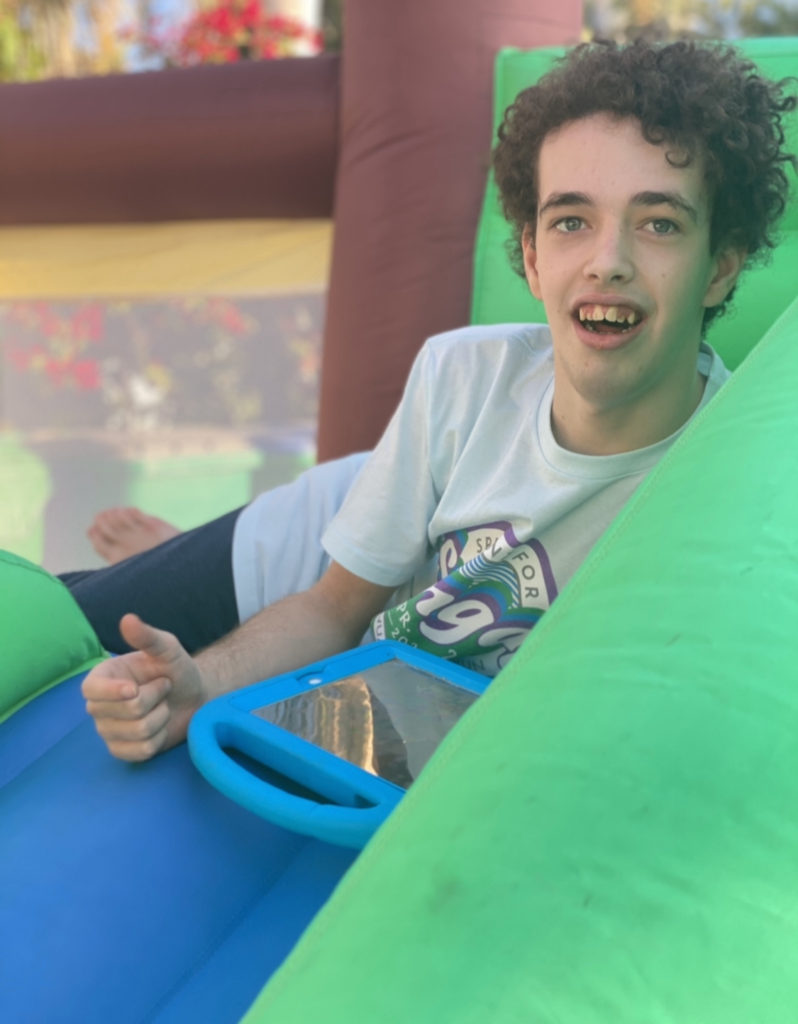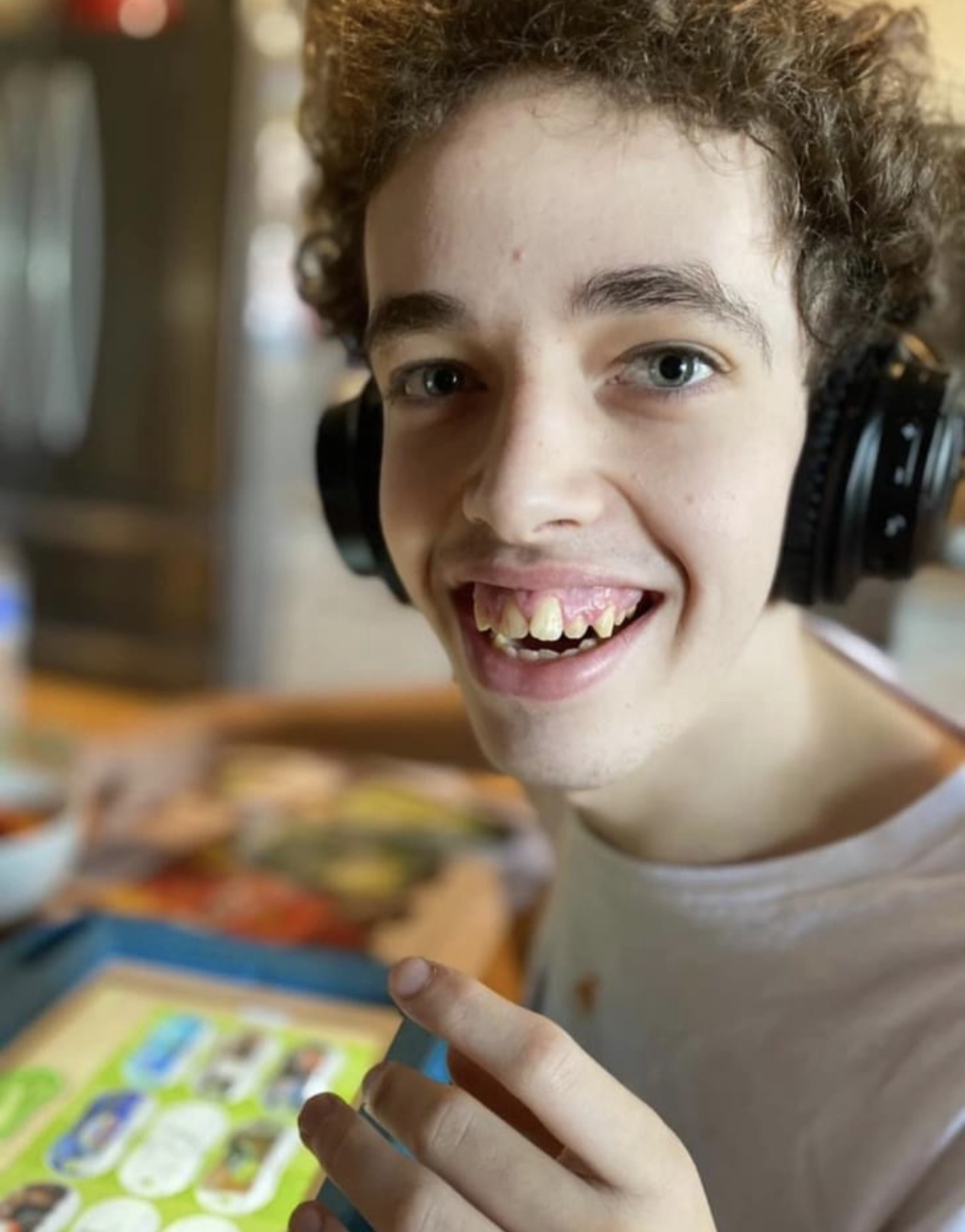Hey! It’s been a minute, but I’m so excited to be back to writing here and sharing the stories of our family with you. So much has happened in the last few years, and I can’t wait to use this platform to continue doing what I love: writing, advocating, educating and storytelling. If you’re new here, welcome! I hope after reading this intro about our family and the post below, you’ll decide to stay.
This post has been a long time coming. One of the biggest things to happen to Andrew and our family has been the incredible discovery that he has a rare genetic disorder called Syngap1. We are now part of the rare disease community, which has been such a huge adjustment for our family, but we’ve met some incredible humans along the way, and are part of a phenomenal foundation that I want you to learn more about. So read on to find out what the heck Syngap1 is, and why it matters so much to our family. In fact, I think I’ll read along with you, since I’m STILL processing this news.

***
He had just turned two when he was diagnosed with autism.
It was 2004 then, and autism was rarely discussed in the pediatrician’s office, but Andrew’s missed milestones had begun piling up and his doctor was no longer able to ignore what was right in front of him: a child unable to speak or play with his toys or point to airplanes in the sky. A child who had lost what few vowels and consonants he had managed to string together before his first birthday, and whose chubby arms would begin flapping whenever he was excited or stressed. Gone was his eye contact, his beautiful blue eyes always seemingly fixed on something right past us. Gone too were the silly games we used to play together, his ability to reciprocate having seemingly vanished into thin air overnight.
We watched as our friends’ children, similar in age to our son, met their milestones with ease, while Andrew seemed suspended in developmental limbo. It wasn’t long before those same kids were surpassing Andrew in every way, and our firstborn son was regressing before our very eyes. A few weeks after being diagnosed with autism, Andrew collapsed in our front yard, his first drop seizure rendering him unable to move his body; it’s difficult to describe the fear and helplessness we felt as we watched seizure after seizure take our little boy hostage. As the months passed, epilepsy was added to his autism diagnosis, with global developmental delay and intellectual disability following soon after.
Before the ink had dried on Andrew’s medical records, we had joined local and national autism foundations, hoping to find answers and support in a growing community we now found ourselves a part of. To this day, we remain friends with many of the families we met in those early years of our autism journey, bonded forever by a shared passion for improving quality of life for our children and bringing autism awareness into world. But despite our involvement in these organizations, connections with other autism families, and seeing autism become a mainstream subject in schools, medical communities, and society as a whole, there was a loneliness to the road we were on with our son.
While autism certainly encompassed a part of Andrew’s challenges and unique perspective on the world, so much of our son still seemed unaccounted for. The intractable epilepsy, hypotonia. severe intellectual disability and global developmental delay all remained part of the bigger picture of who our son was and the many struggles he was facing in his life. Years of genetic testing had yielded nothing more than negative results, and though hope remained a quiet background presence, we resigned ourselves to likely never knowing Andrew’s full story, and instead threw ourselves into advocacy work, therapy appointments, IEP meetings, and helping our son live his very best life any way we could.
And then it happened.
His new epileptologist wanted to run a genetic panel, hoping it would uncover answers about Andrew’s epilepsy and guide us towards better treatments and seizure control. We were sent home with a small box filled with everything our phlebotomist needed to collect the necessary samples. We made the appointment, had Andrew’s labs drawn, scheduled a FEDEX pick up date, and then forgot all about it.
Until the phone rang two weeks later.
He was 16 when we got the news.
I will never forget sitting in the epileptologist’s office, watching as he held Andrew’s genetic report in his hands. He began reading from the first page and my eyes blurred from the tears as I heard him say the words “genetic variant,” “rare disease,” and “SynGAP1.” I didn’t know what any of it meant yet, but in that moment, I knew we finally had the answer we had been so desperate to find. The specialist handed me the report and as I read the symptoms and clinical presentation of SynGAP, it was like reading our son’s own developmental history, as if someone had written nearly word for word what we had witnessed and what he had been through over the years. The missed milestones, the regression, even his clumsy gait was on there. For the first time in sixteen years, we had our child’s complete diagnosis: he had a rare disease called SynGAP, and it caused his epilepsy, global developmental delay, intellectual disability, and autism.
It’s been three years since we found out. There are days I’m still wrapping my brain around the news. Our identity for so long was wrapped up in all of Andrew’s separate diagnoses and while having them all explained by SynGAP has been amazing, it’s also taken some adjustment. Am I still an autism mom? Yes. But now I’m also a SynGAP mom, and in a lot of ways, it feels like we are starting over. Where I have been well-versed in all things ASD, I still stumble when it comes to this rare disease, learning as I go while navigating a new community of families and advocates. One of the greatest gifts of receiving this diagnosis has been the amazing people we’ve met so far along the way. We joined the SynGAP Research Foundation, founded by two SynGAP parents and dedicated to funding science to accelerate treatments aimed at improving our loved ones’ quality of life. In the same way autism families have propelled meaningful changes over the years, SynGAP families too are doing what is necessary to give their children access to the best treatments and services. While rare disease is very different in a lot of ways from autism, the common denominator among these two groups I am grateful to be a part of remains the same: wanting a better life for the people we love.
Ever since Andrew’s diagnosis, I think about how many more people out there have undiscovered SynGAP. The most current SynGAP census shows 883 patients globally, and 246 in the United States, with the oldest known individual with SynGAP to be in her 60’s. But we know the number of people with SynGAP is much higher, which is why stories like Andrew’s matter, and they need to be shared. As the autism community well knows, there is strength in numbers; it’s how we’ve moved mountains for individuals with ASD. The rare disease has its own mountains we need to move and helping families with SynGAP get properly diagnosed is imperative for furthering our mission to fund science, expand supports and resources, and bring awareness to the world.

